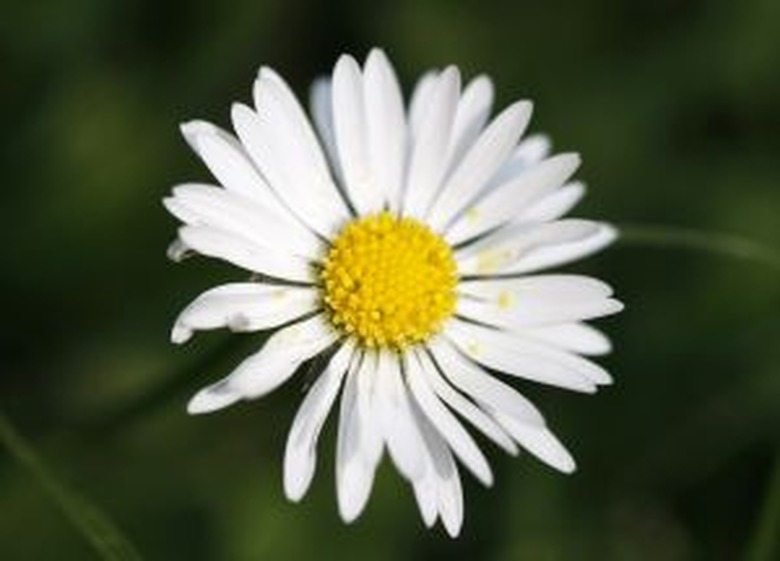How To Prune Shasta Daisy
Shasta daisies are the flowers that come to mind when most people think of daisies. A ring of white petals surrounds the bright yellow center. They often are planted in beds, in wildflower gardens or in borders. Shasta daisies require minimal pruning to bloom abundantly. They will still thrive if not regularly pruned, but they won't blossom as profusely. Whether potted or grown outdoors, proper trimming encourages lusher growth and helps prevent disease.
Step 1
Pinch off the top ½ inch of the tips of the stem when they first reach 6 inches long. Pinching encourages fuller growth and more flowering. This is more important for potted daisies than those in a garden bed, though both benefit.
- Shasta daisies are the flowers that come to mind when most people think of daisies.
- Whether potted or grown outdoors, proper trimming encourages lusher growth and helps prevent disease.
Step 2
Cut back the stem after the flower fades to prevent it from going to seed and to encourage further blooming. Cut it off 1 to 2 inches down the stem using sharp garden shears. Check the plant weekly during the blooming season for spent blooms.
Step 3
Cut off the stem entirely once it quits producing buds and flowers. Cut it off at the base near the soil, using caution not to pull up the plant as you snip.
Step 4
Remove any dead or damaged leaves. Trim them with your shears; don't pull them.
- Cut back the stem after the flower fades to prevent it from going to seed and to encourage further blooming.
- Cut off the stem entirely once it quits producing buds and flowers.
Step 5
Allow the daisies to die back naturally in autumn and cut the foliage to the ground once it has yellowed and died back on its own.
Prune Shasta Daisy?
Shasta daisies (Leucanthemum x superbum), with their cheery white flowers and dark green foliage, make a pleasing addition to cottage gardens, perennial borders and naturalized areas. Adaptable to partial shade, they grow best in full sun with moderate moisture and rich, well-draining soil. Dig up the plants in spring, just as new growth emerges. Use a sharp spade to split the plant into two or three parts. Replant the divided plants, spacing them at least two feet apart. Deadheading, or the practice of removing spent flowers, has several benefits for Shasta daisies. Cut the Shasta daisy plants back in the fall to 2 to 3 inches above the ground after the plants die back.
- Allow the daisies to die back naturally in autumn and cut the foliage to the ground once it has yellowed and died back on its own.
- Cut the Shasta daisy plants back in the fall to 2 to 3 inches above the ground after the plants die back.
Warning
Clean shears after every pruning session to avoid spreading disease to other plants.
Tip
Check daisies weekly for spent flowers during the blooming season. Allow a few flowers to go to seed if you desire more daisies next year. Shasta daisies self-seed quite well.
